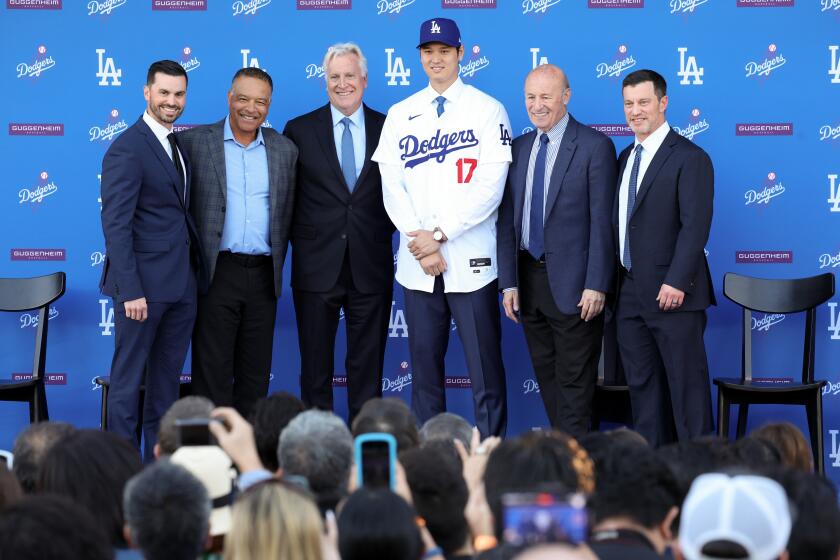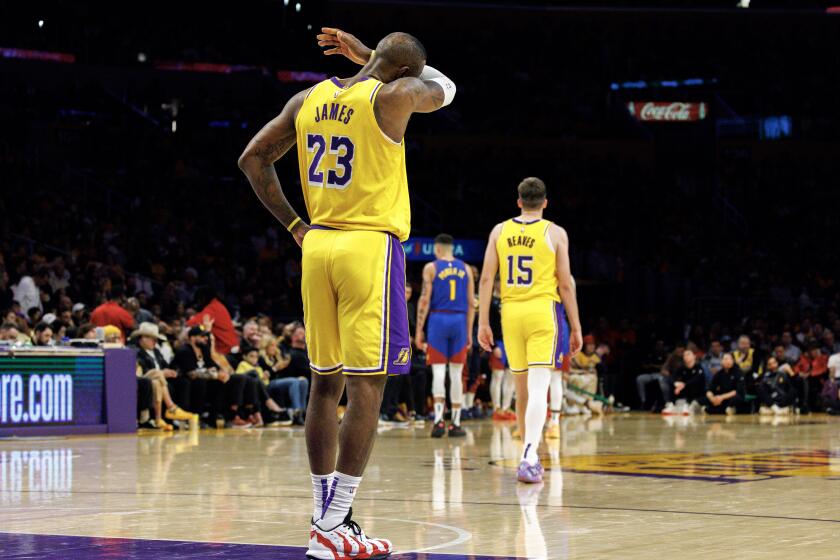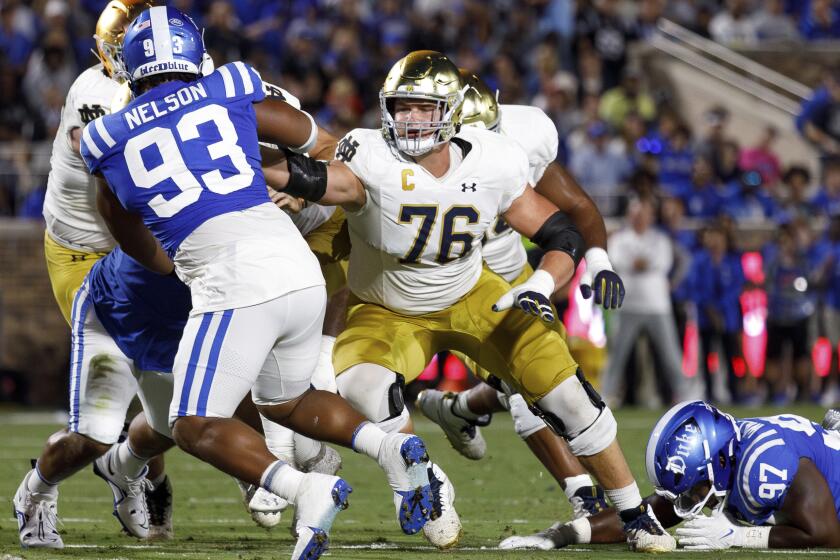NFL punters are being bullied on the block
Through the first half of the NFL season, there have been 14 punts blocked.
That might not sound like a lot, but consider there were nine in the entire 2011 season, meaning the league is on track for more than three times as many.
Sure, it could be a statistical hiccup, although 14 is already more blocked punts than in any full season since 2003. (According to the Elias Sports Bureau, a record 31 punts were blocked in 1977.) Something strange is afoot this season, and it can’t just be that the field of 32 punters includes five rookies since only three of the blocks were on first-year players.
So far, the repeat offenders are Washington’s Sav Rocca and the New York Jets’ Robert Malone, both blocked twice. Every division but the NFC West has been victimized at least once, including three teams in the NFC South — everyone except New Orleans.
A blocked punt is often a game-changer.
“You hear every coach in the NFL talk about, ‘We can’t turn the ball over,’” retired All-Pro punter Darren Bennett said. “That’s a 60-yard turnover every time. Say you net 40 yards on a punt, and they block a punt back 10 or 12 yards. That’s six first downs the other team doesn’t have to get.”
There’s no clear-cut reason why the number of blocks is inordinately high this season, but there are plausible theories. For one, the new collective bargaining agreement dramatically reduces the number of times a team can have full-contact practice in pads. Some teams used to stage those twice a week. Now, they can have only 14 padded practices a season, and 11 of those must take place in the first 11 weeks (with a maximum of one per week).
As a result, protection teams aren’t getting nearly as much live action during the week, and probably aren’t as sharp on game day. And when teams do practice in pads, most coaches want to use the majority of that time fine-tuning the offensive and defensive units, further reducing the number of reps for special-teams units.
The goal of an NFL punt team is to execute the entire operation — from snap to punt — in two seconds or less. Minnesota’s Chris Kluwe and New Orleans’ Thomas Morstead are very quick when it comes to getting the ball off, and require only 1 1/2 or two steps. However, the majority of their colleagues need 2 1/2 or three steps.
Bennett, who spent the bulk of his career with San Diego and retired in 2005, attributed some of the blocks he’s seen this season to a lack of urgency on the punter’s part.
“It was just, ‘I’m just going to sit back here and hit my nice, long, directional punt,’” he said. “When you’ve got your feet in the end zone, you’ve got to be a little faster, especially when they send an eight-man rush. Maybe that’s a little bit of inexperience.”
There are some telltale warning signs an experienced punter can quickly read, he said.
“You’re looking at whether your gunners are doubled, or whether the guys are starting to mug in from the outside and trying to overload to one side once you’ve made your calls,” he said.
Even though he trusted his protection, Bennett approached his job as if a defender would be coming in unblocked.
“If one guy comes clean, you’ve got to be able to beat him,” he said.
But Bennett wasn’t always successful in that regard. The former Australian rules football player had three punts blocked in his 11 NFL seasons — although two of those came when the kicking team had only 10 players on the field. So by his thinking, he fell prey to one legitimate block.
And he forgot it right away — or at least played as if he did.
“You’ve got to have a goldfish memory,” he said. “You’ve got to forget everything after three seconds and just move on.”
Rattling around
The reported attendance for Thursday’s Colts-Jaguars game was 63,272, but EverBank Field in Jacksonville looked nowhere near that full, with huge patches of empty seats. In Tampa Bay, the Buccaneers are ranked last in attendance with a reported average of 53,782 for four home games.
Attendance has been an issue in both cities — even though blackout numbers don’t always reflect that — and is representative of the challenges the NFL will face over the next decade in attracting fans to live events. The game is too good on TV.
The fact that both Jacksonville and Tampa Bay have struggled to pack the house only feeds the theory that the NFL ultimately will wind up with one centralized team in northern Florida.
Quick snaps
Tidbits from odds expert R.J. Bell of Pregame.com:
•With Tony Romo at quarterback, Dallas has won 19 of 22 November games.
•The underdog has covered in 10 of 11 Oakland games.
•Las Vegas oddsmakers say there’s a 7% chance the Atlanta Falcons will go 16-0.
twitter.com/LATimesfarmer
More to Read
Get our high school sports newsletter
Prep Rally is devoted to the SoCal high school sports experience, bringing you scores, stories and a behind-the-scenes look at what makes prep sports so popular.
You may occasionally receive promotional content from the Los Angeles Times.







